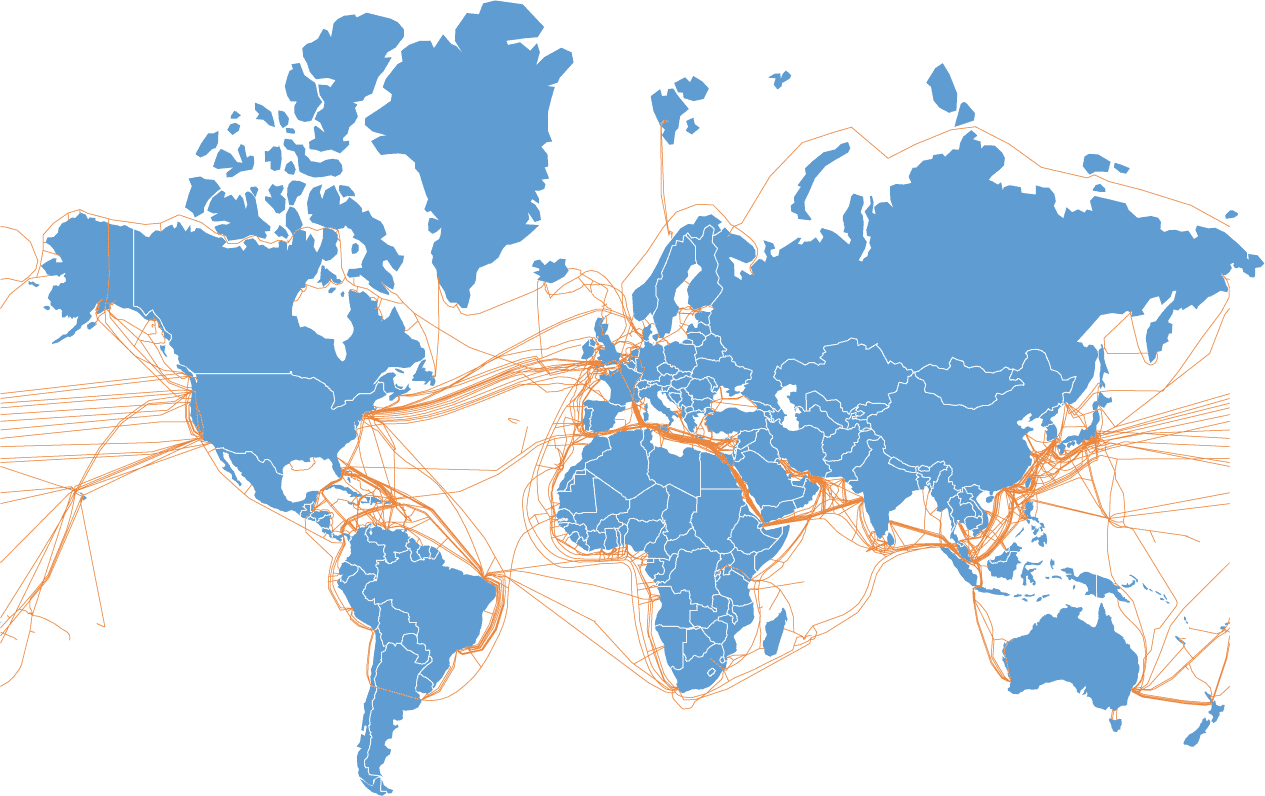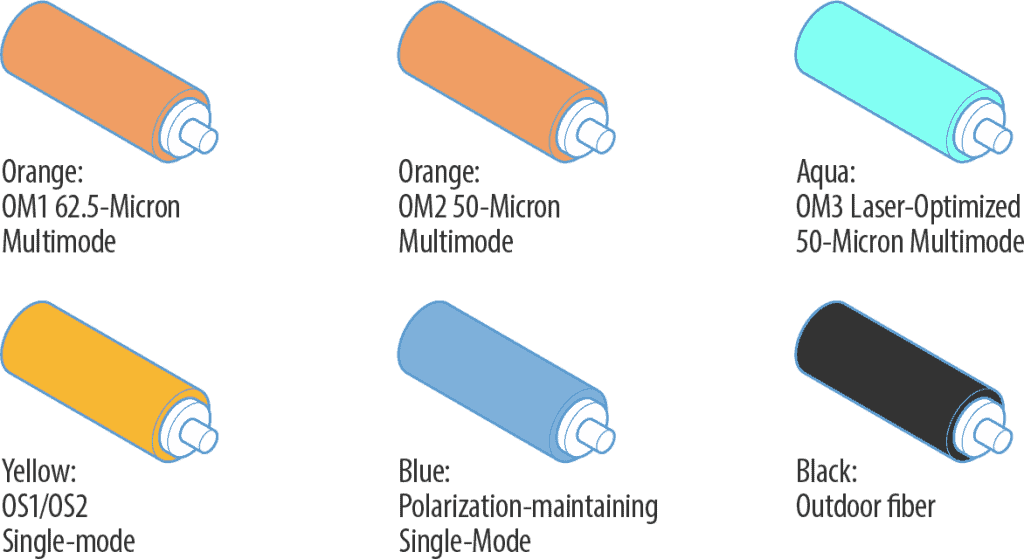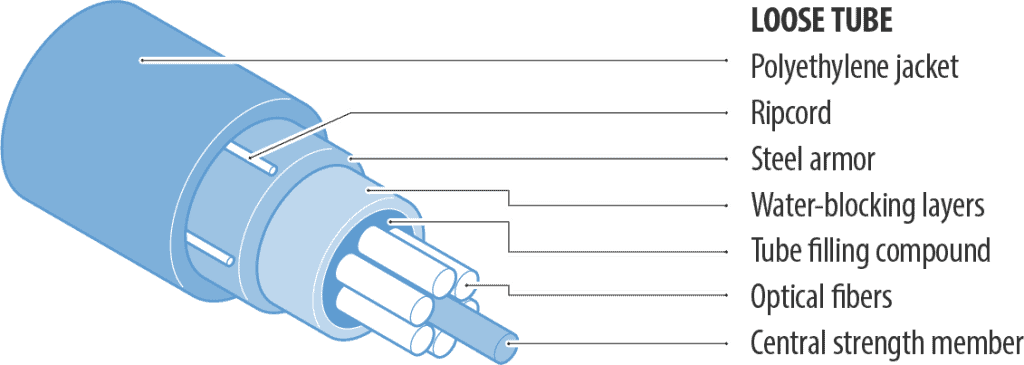Fiber-Optic Internet In the United States at a Glance
Mục Lục
What Is Fiber Broadband? Understanding Fiber-Optic Technology and Fiber Internet Service
At its most basic, the internet is a huge web of connections that allow information to be transmitted back and forth between users. On the internet, everything is data. From your favorite website to the show you’re watching on Netflix, everything you view on the internet must be transferred to your device before it is turned into the images you see on your screen.
How fast that happens depends on the infrastructure that handles the task. The bulk of the journey is handled by the high-capacity connections that stretch between cities and across the oceans — what we might call the “backbone” of the internet — but residential consumers also rely on the more intricate infrastructure that connects neighborhoods and individual homes to that backbone. These finer connections are called “last mile” connections.

For consumers, this is where fiber-optic internet connections come in. Fiber broadband is the fastest method of delivering high-speed internet to residences and businesses. Similar to DSL, cable, and fixed wireless, fiber broadband connections bridge the “last mile” between the mainstream internet backbone and customer residences.
What Does “Broadband” Mean, Anyway?
Transmitting information over any type of cable or wire means sending signals at different frequencies. The most basic cables offer a limited range, or band, of frequencies, which limits how much information can travel at once. More bandwidth means more information can travel at once, which translates to faster speeds. Connections with lots of bandwidth are called “broadband” connections. (The FCC uses standards of 25 Mbps download and 3 Mbps upload as minimum requirements for the broadband distinction.)
In other words, broadband is a designation for fast connections, not a specific type of infrastructure. Fiber internet connections are broadband, but so are many DSL and cable connections — and even some fixed wireless options. (Of course, some broadband connections are faster than others, and fiber is the fastest of all.)
How Fast Is Fiber Internet?
DSL and cable connections use existing phone and TV infrastructure to transmit data as frequency vibrations over copper wires, but fiber networks transmit data using light over specialized cables packed with glass fibers.

Light moves very fast (186,000 miles per second, to be specific), enabling speeds of up to 1,000 megabits (one gigabit) per second on fiber-optic networks — almost 100 times faster than the current U.S. broadband average of 11.7 megabits per second.
Consumers think of fiber as a new technology, but the internet backbone network connecting cities and countries has been built with fiber-optic cables since the dawn of the internet. The first submarine fiber-optic cable connected the U.S. to France and Britain back in 1988, and hundreds currently crisscross the ocean floor all around the world.

What is relatively new about fiber-optic connections, however, is their availability to consumers as a solution to the last-mile problem. Fiber-optic connections can make a huge difference in this area by replacing less impressive alternatives like DSL and cable.
Should You Get Fiber-Optic Internet?
If you’re in a fiber-rich city such as Atlanta (58 percent availability) or Denver (46 percent), fiber generally will provide the fastest speeds at a price point comparable to high-end cable service in fiber-poor areas. Fiber internet is particularly useful for work-from-home setups and large homes with multiple users. In short: If fiber is available in your area, it is virtually certain to be your best bet for fast internet.
The Growth of Fiber Internet in the United States
Using fiber-optic connections for last-mile internet service can make a huge difference to residential and commercial internet users. It isn’t easy, however, to roll out fiber-optic technology to areas that have traditionally relied on other forms of broadband — to say nothing of the challenges involved in bringing fiber-optic connections to areas with no current broadband access.
Unlike some alternative technologies that use existing infrastructure (DSL, for example, uses phone lines), fiber-optic connections require the installation of new fiber-optic cables. Creating this sort of fiber-optic network — called “fiber to the home,” or FTTH, infrastructure — isn’t cheap.
The Limitations of Fiber
Installing a new fiber-optic network is a large capital expenditure for service providers, but maintaining existing networks isn’t cheap either. As the cost to maintain aging copper networks increases over time, more providers will choose to upgrade to fiber. Consumer demand for better and faster broadband will also drive investment in the newer, faster technology.
Some of the first FTTH networks were installed by incumbent providers such as Verizon Fios, which started building out consumer fiber service in the early 2000s and expanded into markets including Baltimore and Boston at the turn of the decade. AT&T’s fiber internet options are an expansion of the company’s longtime presence in the cable and DSL internet markets.
High costs keep many would-be competitors out of this space, affording some time for established internet service providers to roll out new fiber networks of their own in areas they already serve with older broadband infrastructure. Even high-profile exceptions such as Google Fiber — which is backed, of course, by tech giant Alphabet rather than an established ISP — prove the rule: Google Fiber’s network expansion was projected to cost $3,000 to $8,000 per home served.
Google Fiber’s efforts also were frequently foiled by lawsuits and logistical problems,
and the company has largely abandoned its network-building efforts to focus instead on partnering with municipalities building their own publicly funded fiber networks.
As the FCC itself has said, cable-laying cost is a “substantial barrier” to the expansion of fiber access.
How Fiber-Optic Cables Work — and Why Fiber Is Faster
Like other types of internet connections, fiber-optic cables have one basic job: transmit data from one place to another. But what form does that data take?
Imagine trying to communicate with a neighbor using a flashlight in your window. You would only be able to do two things: shine a lit flashlight or keep the flashlight off. By repeatedly turning your flashlight on and off, you may be able to communicate by code.
On a very basic level, this is how fiber-optic cables work. Fiber-optic cables — and other types of cables — transmit binary data, which we typically see represented by ones and zeros. Computers on each end of these transmissions can unpack all the data, decoding those ones and zeros into more complex codes and, eventually, into the words and images we see on a website. But for the data to go over a wire, it needs to be stretched out into that most basic binary shape — a one or a zero, an “on” or an “off.”
Fiber-optic cables transmit that stream of binary data via light pulses, so it’s just about as straightforward as our flashlight experiment. A pulse of light means one, while no pulse means zero.
Well, maybe it’s not quite as straightforward. To really replicate the fiber-optic experience, your flashlight would need multiple bulbs, each of a different color. Each optical fiber within a fiber-optic cable can actually send more than one set of binary data at the same time by using different wavelengths of light.
Our little flashlight communication system is quickly getting impractical, but fiber-optic cables are just getting started. To match a cable, we’d need to be handling a lot more than one flashlight at a time. The inside of a fiber-optic cable is packed with optical fibers made of glass, each about as thick as a human hair. Light particles that enter one end of an individual fiber exit at the other side. This is part of what makes these cables so fast: Each fiber is working to send its own data! Like adding lanes to a highway, packing more fibers into fiber-optic cables allows for faster travel.
Fiber-optic cables are designed to transmit these pulses quickly over long distances. A transmitter at one end of the fiber transmits light pulses as ultra-fast LED or laser pulses. A single flash can travel as far as 60 miles before it begins to degrade.

That impressive 60-mile range is possible because of a light phenomenon called “total internal reflection.” Below a critical angle, light particles bounce within the fiber like a marble dropped down a long pipe. Each fiber is wrapped in a layer of glass or plastic cladding that has a lower optical density than the core fiber, causing total internal reflection to occur where they meet. (Amplifiers along the cable are there to boost the signal when it does finally start to fade.)
All of this is important, because — as you may imagine — it takes an awful lot of ones and zeroes to encode your favorite website or the latest Marvel Studios movie.
Components of a Fiber-Optic Network

- Fiber-optic cable: A cable that transmits data in the form of light pulses.
- Transmitter: A device that translates a digital signal into light pulses for transmission via a fiber-optic cable. Some transmitters can send multiple signals simultaneously using different wavelengths (colors) of light, multiplying the capacity of a single optical fiber. This technique is called wavelength division multiplexing (WDM).
- Receiver: A device that translates light pulses into a digital signal for delivery to a digital device. When WDM is used, the receiver is designed to translate multiple wavelengths from a single optical fiber.
- Amplifier: A device that amplifies light signals within a fiber-optic network. Amplifiers are used when the cable is too long for a single pulse to reach the other end undiminished — for example, connections between cities or submarine cables connecting continents.
Transmitters and receivers are often contained in a single product called a transceiver, because data can move in both directions at once within a type of fiber-optic cable called “simplex” (more on that distinction in a moment).
Anatomy of a Fiber-Optic Cable
Let’s get a closer look at the pieces that make up a typical fiber-optic cable.
Inside a fiber-optic cable, individual optical fibers are surrounded by several layers of material that strengthen, protect, and keep light from escaping.

A typical fiber-optic cable is packed with dozens to hundreds of individual optical fibers, allowing a high volume of data to travel over a single connection.
“Dark Fiber”
Cables are often installed with additional unused fibers. These so-called “dark fibers” can be lit up in the future if more capacity is needed. This clever act of future-proofing makes fiber-optic networks highly scalable compared to DSL or coaxial cable, allowing a network to grow easily without burying additional cables. Dark fiber was installed rapidly during the original dot-com boom. Cities such as Washington, D.C., have huge quantities of dark fiber still unlit and, therefore, still have room to grow their fiber bandwidth.
All fiber-optic cables contain multiple optical fibers, but there are a few different forms of fiber-optic cable to consider.
Single Mode vs. Multimode
There are two types of optical fiber: single mode and multimode.
Single mode has a smaller core and carries laser diode transmissions over large distances. Multimode transmits LED light through a bigger core, where light “bounces” in multiple paths over shorter distances.

Multimode is significantly cheaper than single mode, making it common for shorter distances within city networks.
To keep track of these different types of fibers, a simple color-coding system is used.

When all the fibers within a cable are the same type, the cable’s outer layer will be color-coded accordingly. Some cables contain more than one type of fiber, though, which means color coding has to happen inside the cable. In these cases, individual bundles of fiber within the cable are color-coded so installers can identify which interior bundles to connect when splicing cables together.
Cable Construction: Ribbon vs. Loose Tube
Complete fiber-optic cables come in two basic varieties: ribbon and loose tube.
A ribbon cable packs its fibers more closely, while a loose tube cable offers more padding and protection against the elements. Why use ribbon? Simple: It’s cheaper!


Simplex vs. Duplex
Internet connections need to go two ways. After all, you can’t receive the data you need to display a website until you send information about which website you’re trying to view. Fiber-optic networks therefore need to be able to work in all directions. There are two ways of handling this: simplex cables and duplex cables.
Duplex cables include two separate fiber-optic cables connected by the outer coating, with one entry and one exit point on each end. Data flows in only one direction on either cable, almost like a divided highway. Simplex cables, on the other hand, just use one cable for both directions.

In many cases, simplex cables will work just fine. Home internet users, for example, tend to need more download bandwidth than upload bandwidth, so simplex cables are sufficient. When necessary, there will typically be enough fibers to spare a few for the return trip.
When traffic is high in both directions — as is often the case with connections like backbone ports, fiber switches and servers — a duplex cable may make more sense.
All Fiber? Don’t Believe the Hype
Companies that sell fiber broadband often describe themselves as “100 percent fiber networks.”
That term is misleading because there are several tiers of fiber broadband service recognized by the FCC, and most of them switch to coaxial or ethernet cable at some point between the ISP and your modem jack.
These connections can still be fast, but don’t get carried away by the hype!
What’s Next for Fiber in the U.S.? Implementation Challenges and Opportunities
Fiber-optic networks have grown largely through private investment, particularly on the parts of established ISPs. But the government has a significant role in encouraging growth — and, in some cases, municipalities are creating fiber networks of their own. Fiber is a common choice for cities that want to invest in municipal public broadband infrastructure.
Unfortunately, complex state laws — many created under pressure from telecom lobbyists — often prohibit cities from installing their own fiber, on the grounds that it puts them in competition with private businesses. That’s a major roadblock to fiber broadband growth.
That’s not to say the government isn’t working to improve the situation. Fiber broadband access is one focus of the Biden administration’s major infrastructure bill.















![Toni Kroos là ai? [ sự thật về tiểu sử đầy đủ Toni Kroos ]](https://evbn.org/wp-content/uploads/New-Project-6635-1671934592.jpg)


